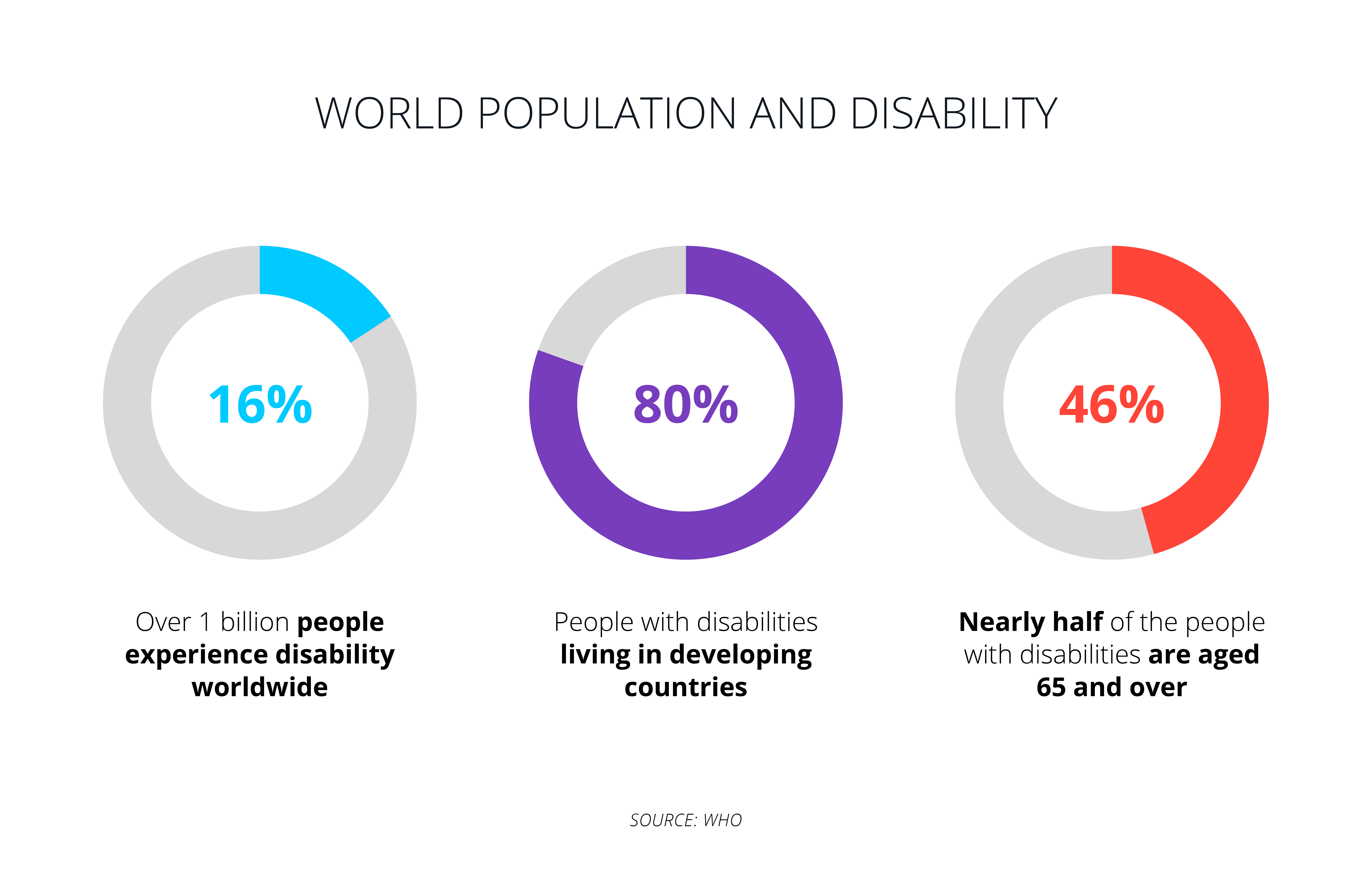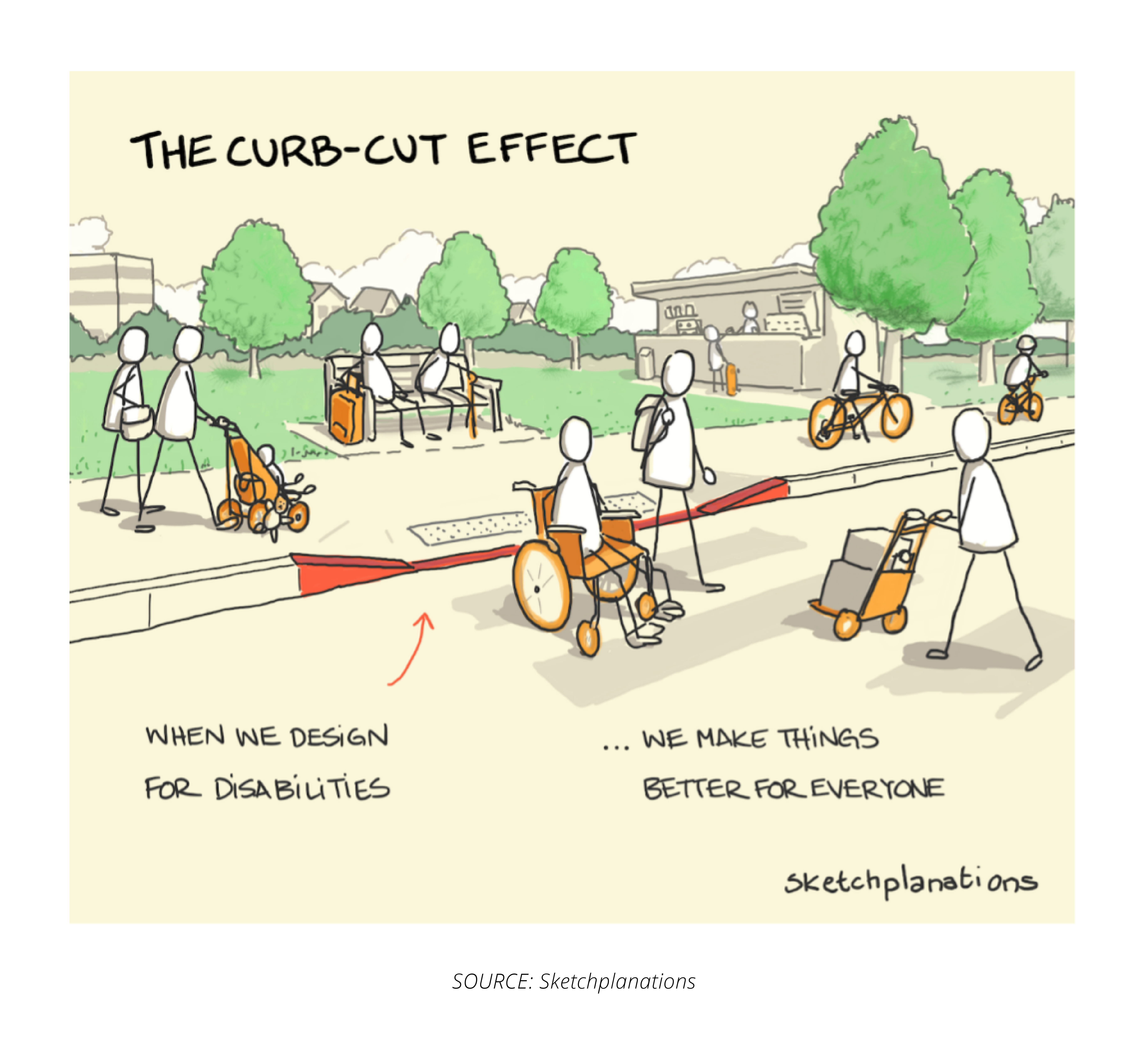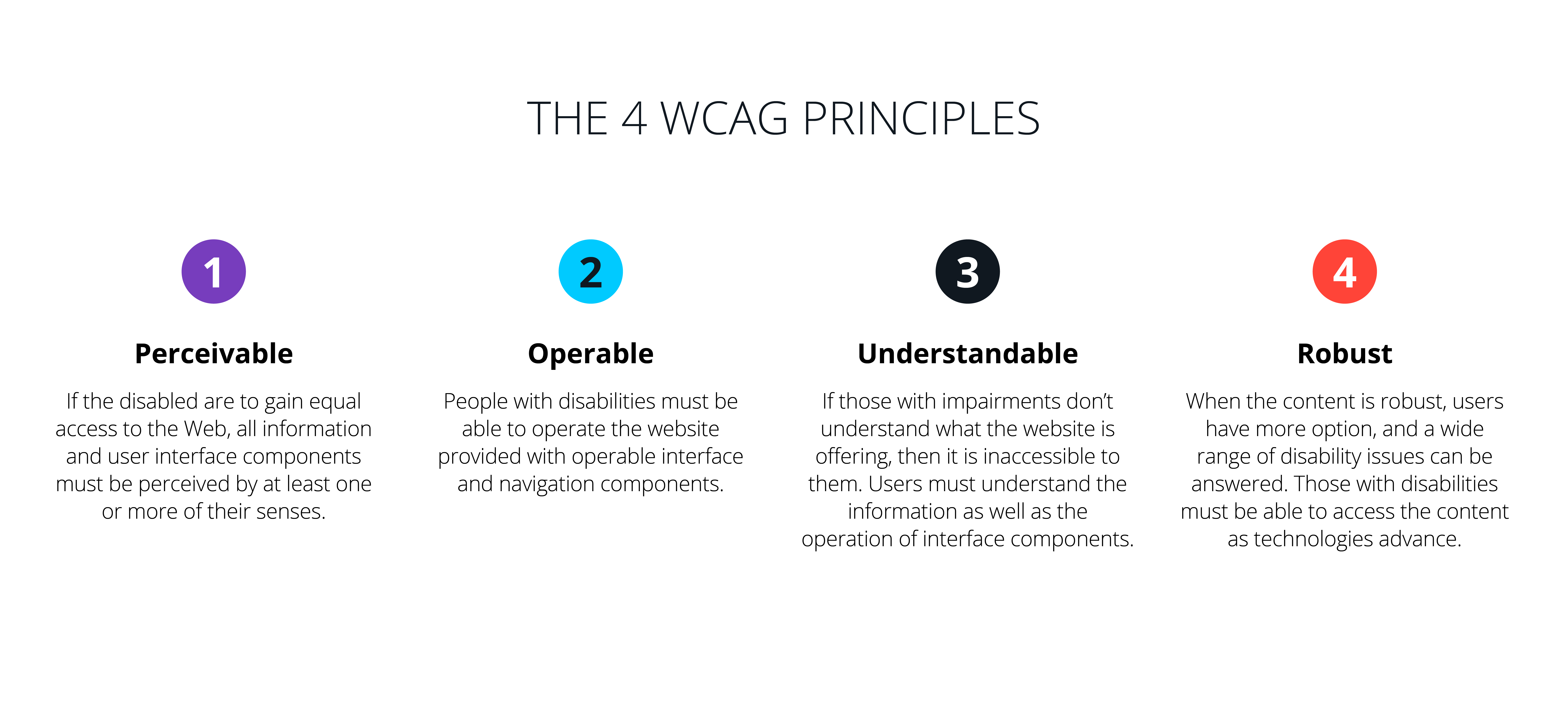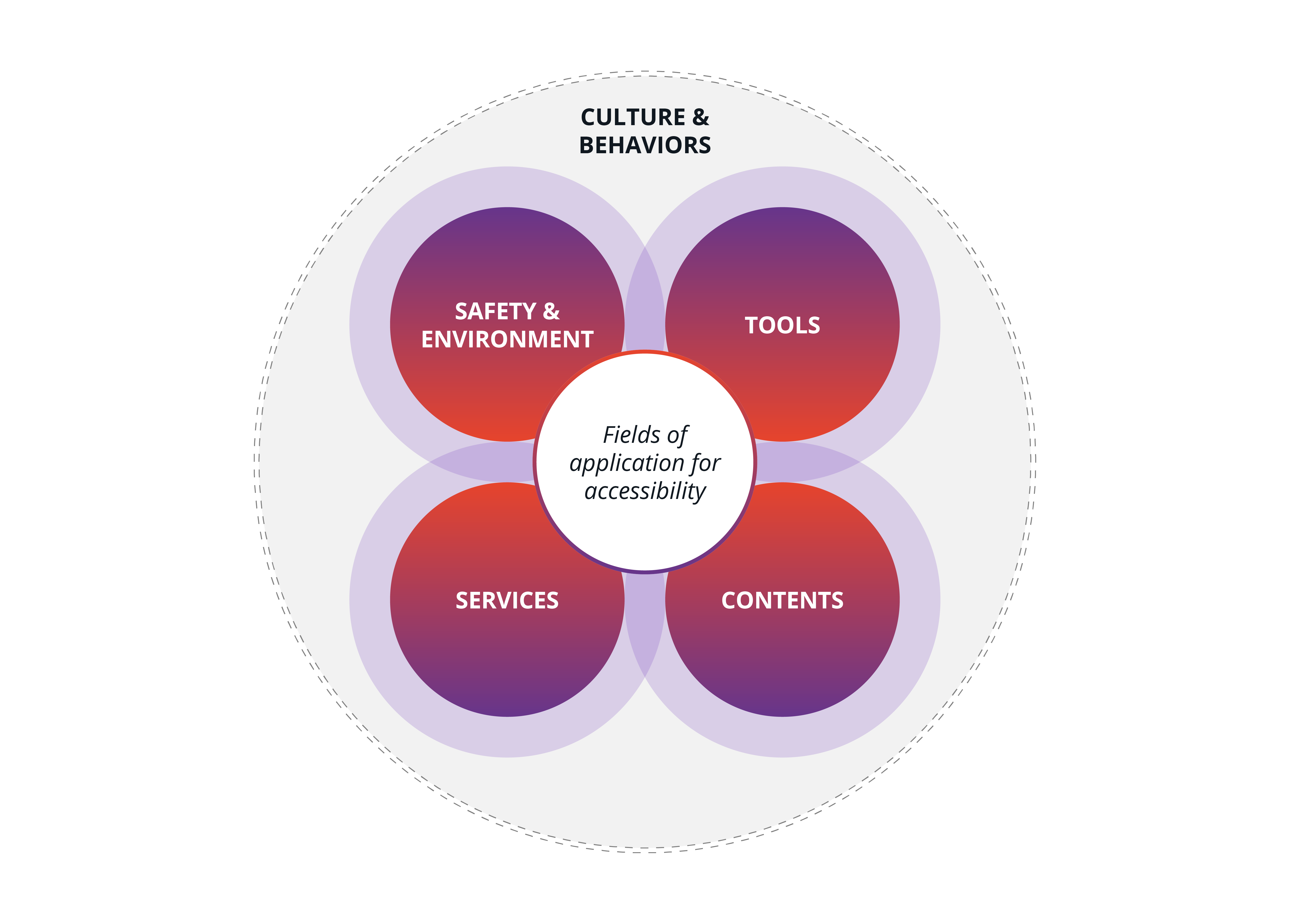How to Design Accessible Deliverables
Tools and ways for an inclusive approach
The link between inclusion and accessibility
In the discussion related to diversity, equity, and inclusion (acronym DE&I), in both social and work contexts, disability is a topic that is still greatly neglected.
The concept of disability is broad and multifaceted. It refers to any limitation or loss (resulting from an impairment) on an enduring basis of physical, mental, and/or sensory abilities that, in various ways, may arise from a congenital condition, develop over time progressively, or be associated with an injury or trauma. When interacting with different kinds of hurdles, people with these conditions, which are not always visible, are hindered from carrying out activities and fully participating in social contexts.
Worldwide, more than 1 billion people, or about 16% of the population, live with a disability. But only 4% of companies that claim to prioritize diversity consider disabilities in their initiatives.

Building an inclusive organizational environment also comes through a commitment to ensuring that people with disabilities have the opportunity to fully experience a professional world without any limitations. Experience comprises of culture, environments, services, tools, and content.
In addition to ethical motivation, this assumption is solidified by the Curb Cut Effect, the principle that the design of a disability-friendly product or service can be appreciated by a broader population that can benefit from it and notice an improved user experience.

From this reflection and in response to the explicit needs encountered in multiple projects at OpenKnowledge, we have been asking ourselves how to make our approach more inclusive and have taken the opportunity to experiment specifically with producing accessible deliverables.
Over the following few paragraphs, we will look at what approaches and tools we have developed to support creating and producing content from an accessibility perspective internally.
IT accessibility
When we talk about accessibility, we mean the characteristics of an environment, service, device, or resource usable by any user, directly or indirectly, through compatibility with the person’s assistive technologies.
While there are many and varied types of disabilities (visual, hearing, physical, vocal, cognitive, speech, learning, and neurological) and, consequently, accessibility, the increasingly digitized new ways of working have considerably sharpened the attention to IT accessibility and the need to reduce the web accessibility divide. Today, it does not allow people with disabilities equal access to IT resources compared to the rest of the user base.
From a regulatory point of view in Italy, only public administrations, public bodies, and organizations offering public utility services are explicitly obligated to comply with computer accessibility requirements (Stanca Law, 01-2004). However, the issue is increasingly relevant for everyone and is demonstrated by the existence and continuous evolution of the WCAG, Web Content Accessibility Guidelines, and the international guidelines for the accessibility of websites and content drafted by the W3C, the World Wide Web Consortium.
Making an accessible deliverable checklist
Thanks to the international guidelines (the most up-to-date version which is currently 2.1, dating back to 2018), at OpenKnowledge, we started to lay the first foundations of an inclusive and accessible approach to be adopted whenever we find ourselves producing digital deliverables.
We did this by moving within the perimeter bounded by the 4 principles, which determine the accessibility of web content and user interfaces, and extending their application to various outputs that we often need to produce in multiple projects.


From these principles, we constructed a checklist that summarizes some basic requirements. This list guides us internally when making materials such as text documents, training manuals, classroom presentations, graphics, and videos usable by people with disabilities and, therefore, accessible within the organizational context in which we operate occasionally.
This checklist, which originated within the international guidelines, has become a helpful guidance and control tool for increasing the compliance of the content produced with WCAG standards.
It isn’t the only tool, as its application and checking the compatibility of the content with assistive technologies (such as, in our case, screen reading software for the visually impaired) proved to be fundamental although not exhaustive, fitting only into the verification activities carried out downstream of the design of the materials.
Methodological clarifications and takeaways
In this first experiment, we have become aware that the approach that we relate to the issues of disability and accessibility is often lacking, even in computer accessibility. This area depends not only on accessible content but also on accessible Web browsers and other user programs (where developing tools play an essential role).
The fault lies with the technical aspects that are diversified and by no means trivial, and because the types of disabilities are varied and must be considered with a non-generalist approach. When we speak of disabilities, we mean both the limitation in different degrees of physical, psychic, and/or sensory capacity and its total loss.
Thus, one should not so much ask whether one is accessible or not (in the production of digital outputs but not only) but instead how accessible one can become for an increasing number of people with disabilities. All this while considering that building a comprehensive model for such people’s needs requires considerable effort.
With this in mind, it becomes crucial to thoroughly analyze the needs of the corporate population to co-design solutions and deliverables that conform to the different levels and types of accessibility needed in the specific organizational context.
In other words, only a design methodology based on listening and an agile continuous improvement approach allows for the adaptive management of such a fluid domain within different design frameworks.
Accessibility must increasingly become a cultural mindset issue. The real gap lies in pursuing it by design at all project stages; it shouldn’t be so much a matter of making environments, tools, services, and content accessible (e.x, post) but more the importance of designing them so that they are usable by any user. This is the case, even when the representativeness of people with disabilities is low within our target audience.

We suggest starting with an overall assessment of the accessibility of one’s organization. Then, analyzing it through multiple lenses and by areas of expertise to apply this holistic and integrated approach aimed at ensuring freedom of expression for all people, regardless of the presence of one or more disabilities.
To learn more, we recommend the article on the Framework for Self-Assessment of Accessibility in organizations in our insert Words, Signs, Cultures for Harvard Business Review Italy.
To explore further inclusive tools and practices in the age of digital collaboration, we also recommend the article Golden Rules to Adopt When Interacting with Deaf People, born out of another of our field experiments.
Authors
Silvia Basilico, Giuseppe Giordano

 23 March 2023
23 March 2023
